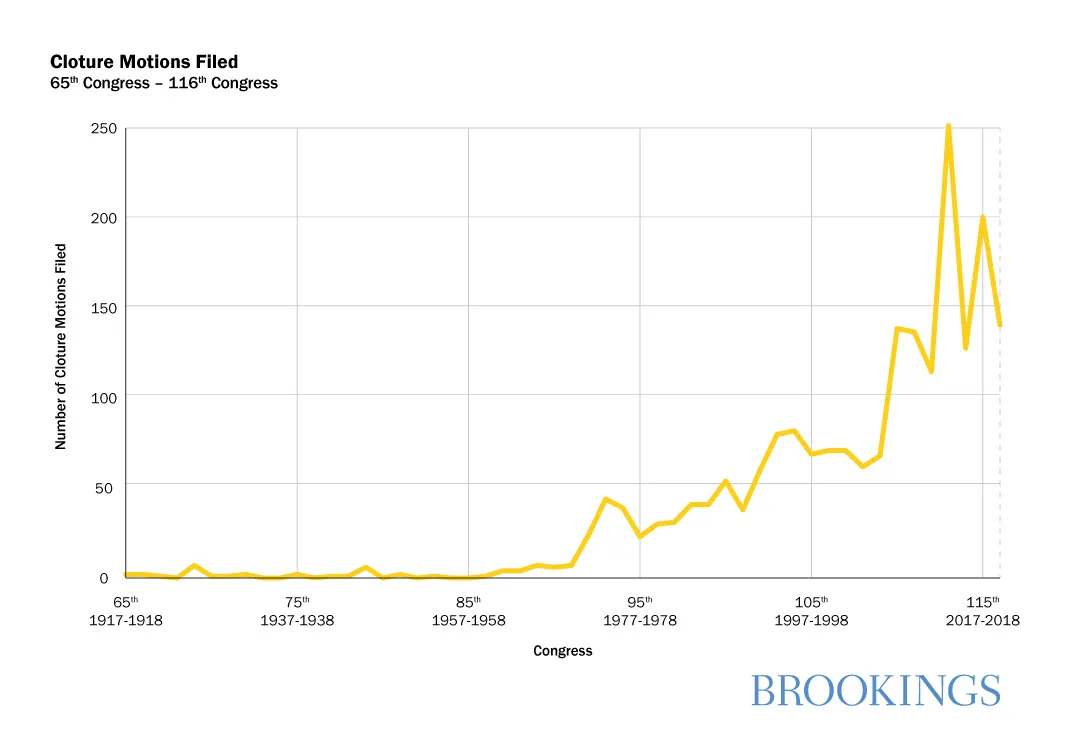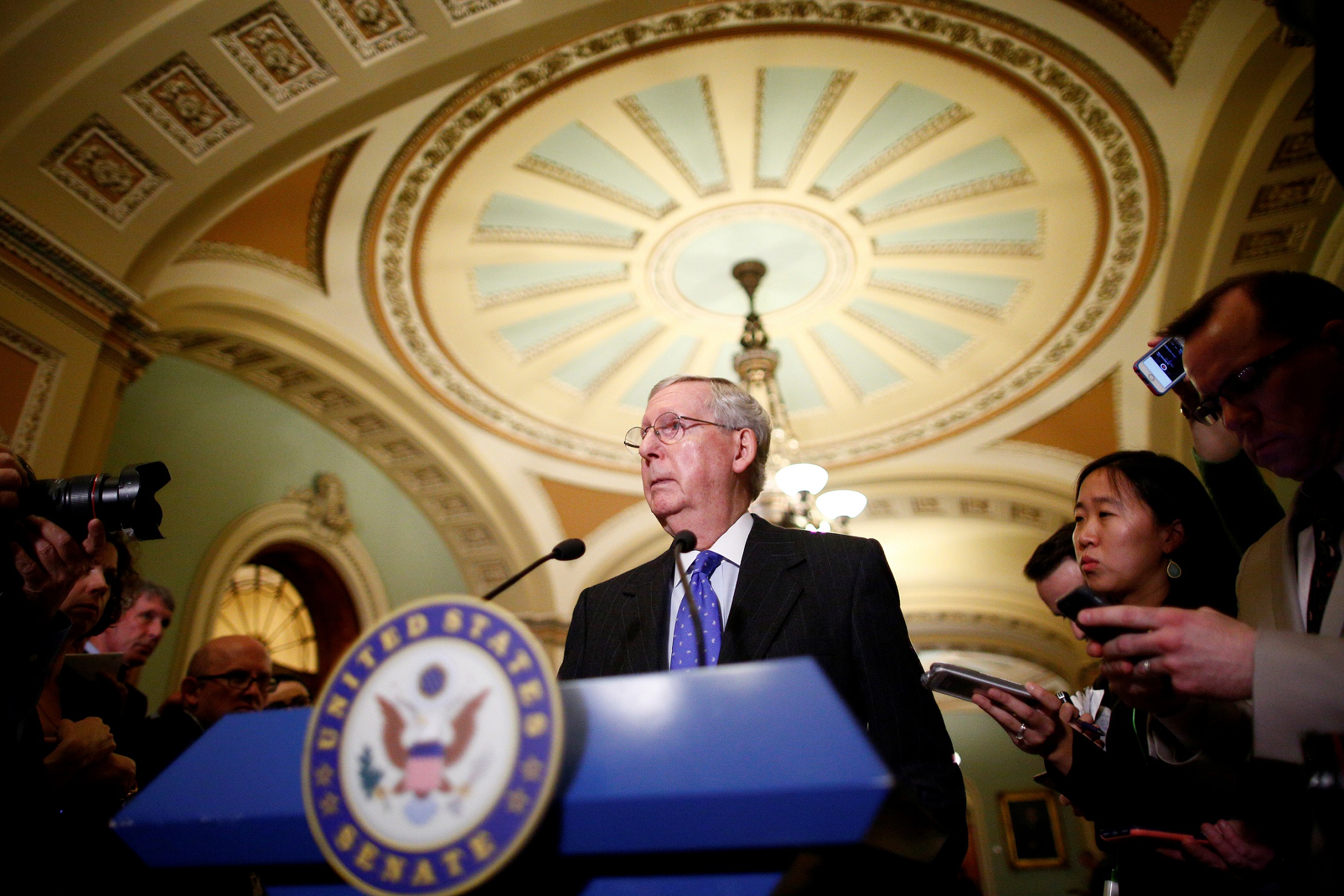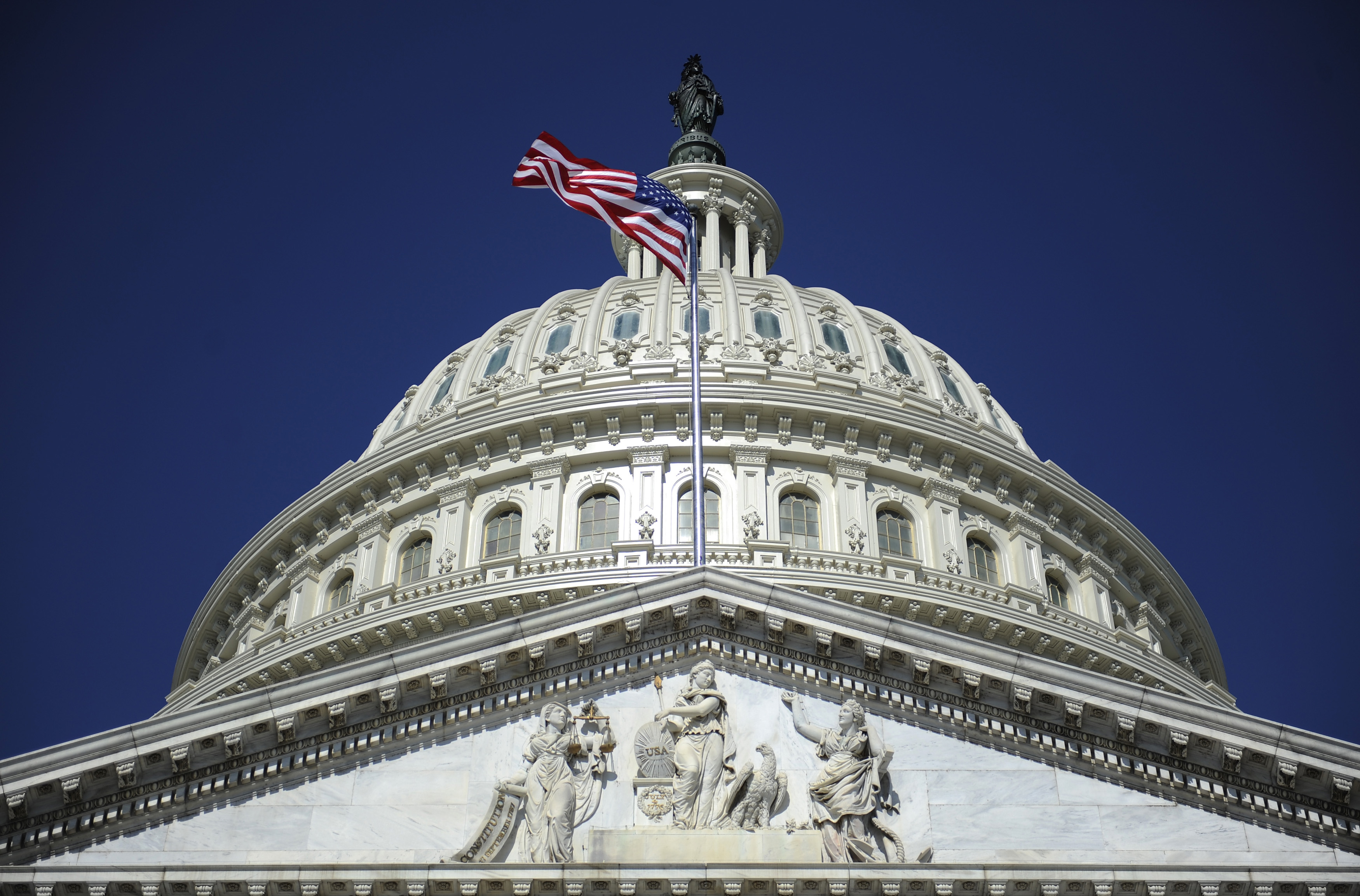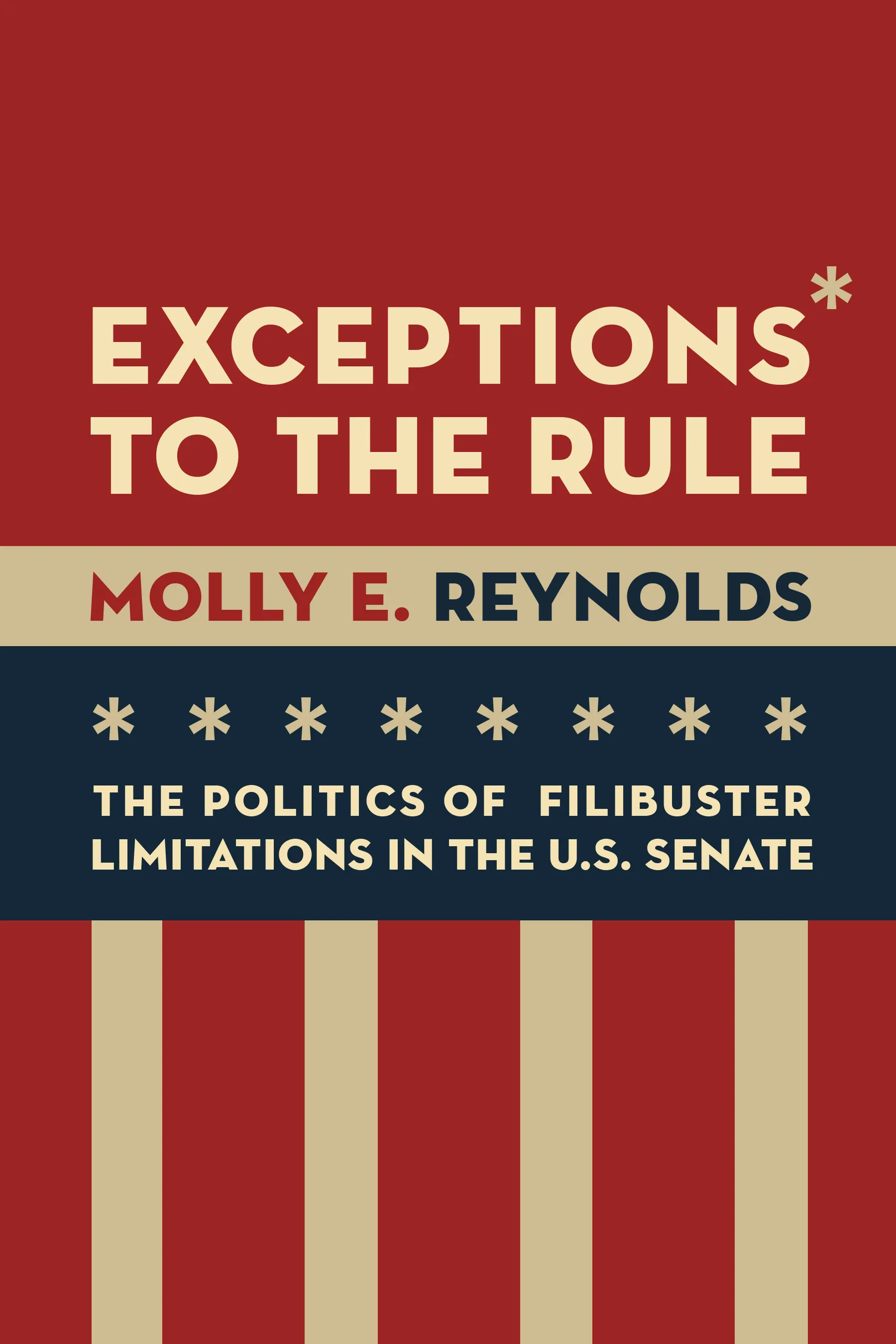What Can the Senate Do Without the House of Representatives
A version of this Voter Vital was starting time published on October 15, 2019. It was updated on January 29, 2021.
Brookings hosted a debate on the merits of filibuster reform measures on January 20, 2021. Click here to lookout man a recording of the event where Richard Arenberg, manager of the Taubman Heart for American Politics and Policy at Brownish University, argued to keep the delay and University of Texas, El Paso Assistant Professor Carlos Algara argued to eliminate it.
The Vitals
The Senate cloture rule—which requires 60 members to end debate on most topics and movement to a vote—could pose a steep bulwark to any incoming president's policy agenda. Voices on both sides have called for reform in the face of partisan gridlock, and while change may be possible now that Democrats command Congress and the White House, complicated dynamics in the Senate would make information technology an uphill battle.
-
The Senate has a number of options for curtailing the use of the filibuster, including by setting a new precedent, changing the rule itself, or placing restrictions on its employ.
-
President Joe Biden has expressed some openness to the idea, depending on how obstructive congressional Republicans become, just it'due south ultimately upwardly to the Senate to set the procedure in motion.
-
Use of the Senate cloture dominion has go far more than mutual in the 21st century. More cloture motions have been filed in the concluding 2 decades than in the 80 years prior.
A Closer Await
Merely weeks into Joe Biden's presidency, it is clear that he faces considerable obstacles in pursuing his agenda in Congress. The Senate cloture rule—which requires 60 votes to cut off contend on most measures—is probably the highest hurdle. Democrats' Senate majority rests on the tie-breaking vote of Vice President Kamala Harris, and fifty-fifty the process of organizing the Senate's committees got bogged down by a debate over whether Democrats would attempt to eliminate the legislative filibuster in the opening weeks of the 117th Congress. While Democrats have some procedural options for circumventing the filibuster—discussed in greater particular below—the debate over whether to retain the procedure is likely to remain middle phase as legislators work to accost the range of challenges facing the country.
Where did the filibuster come up from?
While our understanding of the Senate equally a slower-moving, more than deliberative trunk than the House of Representatives dates to the Constitutional Convention, the filibuster was not part of the founders' original vision of the Senate. Rather, its emergence was fabricated possible in 1806 when the Senate—at the advice of Vice President Aaron Burr—removed from its rules a provision (formally known as the previous question move) allowing a uncomplicated majority to strength a vote on the underlying question being debated. This decision was not a strategic or political ane—it was a simple housekeeping thing, as the Senate was using the motion infrequently and had other motions bachelor to it that did the aforementioned affair.
Filibusters and then became a regular feature of Senate activity, both in the run-up to and aftermath of the Ceremonious State of war. Senate leaders from both parties sought, but failed, to ban the delay throughout the 19th century. Opponents would just filibuster the motion to ban the filibuster. In 1917, as part of a argue over a proposal to arm American merchant ships as the U.S. prepared to enter World War I, the chamber adopted the starting time version of its cloture rule: It allowed ii-thirds of all senators present and voting to end argue on "any pending measure." Several changes to the rule followed in the coming decades. More than recently, in 1975, the number of votes needed to invoke cloture on legislative matters was reduced to three-fifths (or 60, if the Senate is at full force). In 1979 and 1986, the Senate further express debate once the Senate had imposed cloture on the pending business.
Consequently, for many matters in the Senate, argue can only exist cut off if at least sixty senators support doing so. (This is not universally true, however, and nosotros will come across several consequential counterexamples below.) While Senate rules still require just a elementary majority to actually pass a bill, several procedural steps forth the way require a supermajority of 60 votes to end fence on bills.
How has the use of the delay changed over time?
At that place'south no perfect way to measure the frequency with which the delay has been used over time. Senators are non required to formally register their objection to ending debate until a cloture move actually comes upwards for a vote. If Senate leaders know that at least 41 senators plan to oppose a cloture motion on a given measure or motion, they often choose not to schedule information technology for floor consideration. Only the number of cloture motions filed is a useful proxy for measuring filibusters, and as we come across below, the number of such motions has increased significantly during the 20th and 21st centuries.

How does the Senate go around the filibuster now?
Senators have two options when they seek to vote on a measure out or motion. Most often, the majority leader (or some other senator) seeks "unanimous consent," asking if whatsoever of the 100 senators objects to ending debate and moving to a vote. If no objection is heard, the Senate proceeds to a vote. If the majority leader tin can't secure the consent of all 100 senators, the leader (or another senator) typically files a cloture movement, which so requires 60 votes to adopt. If fewer than sixty senators—a supermajority of the chamber—support cloture, that's when nosotros often say that a measure has been filibustered.
While much of the Senate's business organization at present requires the filing of cloture motions, there are some important exceptions. One involves nominations to executive co-operative positions and federal judgeships on which, thanks to two procedural changes adopted in 2013 and 2017, only a simple majority is required to stop debate. A 2nd includes sure types of legislation for which Congress has previously written into law special procedures that limit the amount time for debate. Because there is a specified corporeality of time for fence in these cases, there is no need to use cloture to cut off debate. Perhaps the best known and most consequential example of these are special upkeep rules, known every bit the budget reconciliation process, that allow a simple bulk to adopt certain bills addressing entitlement spending and revenue provisions, thereby prohibiting a delay.
How would eliminating the filibuster really work?
The nearly straightforward fashion to eliminate the filibuster would be to formally change the text of Senate Rule 22, the cloture rule that requires lx votes to finish debate on legislation. Here'southward the take hold of: Ending fence on a resolution to modify the Senate's standing rules requires the support of two-thirds of the members nowadays and voting. Absent a large, bipartisan Senate majority that favors curtailing the right to debate, a formal change in Rule 22 is extremely unlikely.
A more complicated, but more likely, way to ban the filibuster would be to create a new Senate precedent. The bedchamber's precedents exist aslope its formal rules to provide additional insight into how and when its rules accept been applied in particular ways. Chiefly, this approach to curtailing the delay—colloquially known as the "nuclear option" and more formally as "reform by ruling"—can, in sure circumstances, be employed with support from only a simple majority of senators.
The nuclear option leverages the fact that a new precedent can be created by a senator raising a point of order, or claiming that a Senate dominion is being violated. If the presiding officer (typically a member of the Senate) agrees, that ruling establishes a new precedent. If the presiding officer disagrees, another senator can appeal the ruling of the chair. If a bulk of the Senate votes to reverse the conclusion of the chair, and then the reverse of the chair's ruling becomes the new precedent.
In both 2013 and 2017, the Senate used this arroyo to reduce the number of votes needed to end debate on nominations. The majority leader used two non-debatable motions to bring up the relevant nominations, and so raised a indicate of order that the vote on cloture is by majority vote. The presiding officer ruled confronting the bespeak of order, but his ruling was overturned on appeal—which, again, required merely a majority in support. In sum, by following the correct steps in a particular parliamentary circumstance, a simple majority of senators can constitute a new interpretation of a Senate rule.
What are some ways to alter the delay without eliminating it entirely?
The Senate could besides move to weaken the filibuster without eliminating it entirely. A Senate majority could detonate a "mini-nuke" that bans filibusters on particular motions but otherwise leaves the 60-vote rule intact. For example, a Senate majority could preclude senators from filibustering the motility used to retrieve a bill to first (known equally the motion to keep). This would preserve senators' rights to obstruct the beak or amendment at hand, but would eliminate the supermajority hurdle for starting debate on a legislative measure.
A 2nd pick targets the then-called Byrd Rule, a feature of the budget reconciliation process. These bills have been critical to the enactment of major policy changes including, recently, the Affordable Care Deed in 2010 and the Tax Cuts and Jobs Human action in 2017. To baby-sit against a majority stuffing a reconciliation measure with non-budgetary provisions, the Byrd Rule limits the contents of the bill and requires lx votes to set aside. Considering the Senate's non-partisan parliamentarian plays a meaning role in advising whether provisions comply with the Byrd Dominion, some senators take proposed diluting the ability of the Byrd Dominion past targeting the parliamentarian. This approach would weaken the filibuster past making it easier for a bulk party to clasp more than of its priorities into a reconciliation bill (which then simply requires a uncomplicated majority to pass). For instance, the majority party could select a parliamentarian who is more than willing to advise weaker enforcement of the Byrd Rule, and, indeed, in that location is some history of the parliamentarian'southward awarding of the Byrd Rule affecting his or her appointment. Alternatively, the senator presiding over the chamber (or the vice president, if he or she is performing that part) could disregard the communication provided to him or her by the parliamentarian, undercutting the efficacy of the Byrd Rule.
In addition, discussions amid Democratic senators, led past Senator Jeff Merkley (D-Ore.), take surfaced other ideas that aim to reduce the frequency of filibusters by making it more difficult for senators to employ the tactic, including requiring senators who oppose a measure to exist physically nowadays in the chamber to prevent an stop to debate.
How likely are we to see a change to the delay in 2021?
Past winning majorities in both houses of Congress and the White House, Democrats take achieved one necessary status for filibuster reform: unified party control of Washington. Under divided political party government, a Senate majority gains little from banning the filibuster if the Business firm or president of the other party will just block a bill's progress.
Just the filibuster could notwithstanding survive unified party command. Senators oft speak about their principled support for the filibuster. Merely senators' views almost the rules are more ofttimes shaped past their views about policy. There would likely need to be a specific mensurate that bulk party senators both agreed upon and cared enough about to make banning the filibuster worth it. As Republicans' experience in the first two years of the Trump assistants suggest, such proposals may exist easier imagined than achieved.
In addition, individual senators may detect the filibuster useful to their ain personal power and policy goals, every bit it allows them to take measures hostage with the hopes of securing concessions. For majority party leaders, meanwhile, the need to secure 60 votes to terminate debate helps them to shift blame to the minority party for inaction on problems that are popular with some, but not all, elements of their ain party. Finally, senators may be concerned virtually the future; in an era of frequent shifts in control of the chamber, legislators may worry that a rule change now will put them at a disadvantage in the near future.
This work is licensed under the Creative Commons Attribution-NonCommerical-NoDerivatives four.0 International License. To view a copy of the license, visit https://creativecommons.org/licenses/by-nc-nd/4.0/.
More than Voter Vitals
Dig Deeper

Filibuster: Republican friend or foe?
With a series of votes today, the Senate "went nuclear," reducing the number of votes needed to end fence on a Supreme Court nomination from 60 to 51. While he led today's charge, Senate Bulk Leader Mitch McConnell (R-Ky.) has committed to maintaining the current procedures for regular legislation. Should we believe him? I've argued […]


Source: https://www.brookings.edu/policy2020/votervital/what-is-the-senate-filibuster-and-what-would-it-take-to-eliminate-it/
0 Response to "What Can the Senate Do Without the House of Representatives"
Post a Comment